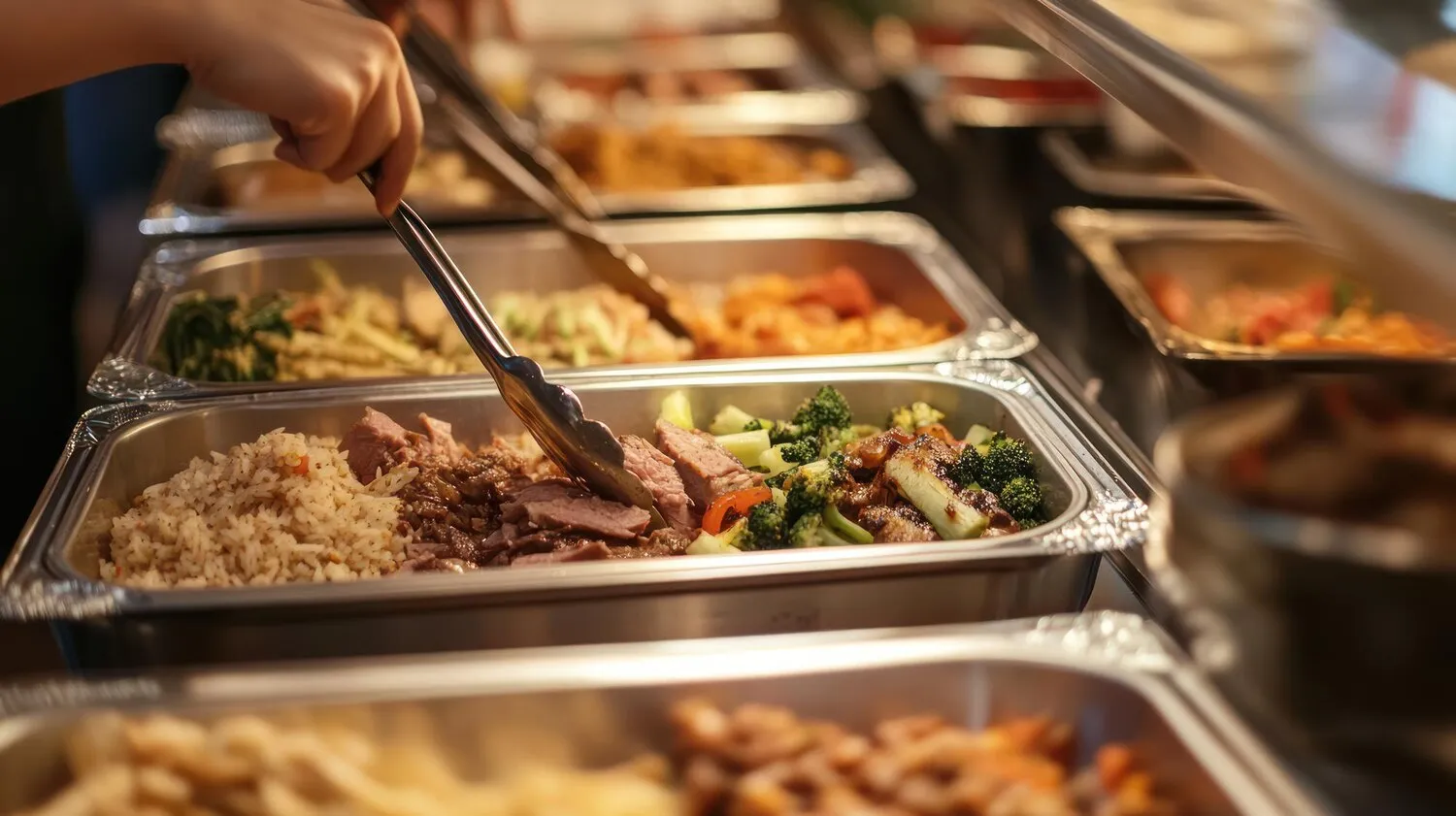
Buffet de Acompanhamentos
A diverse buffet offering a variety of side dishes, salads, and hot dishes to complement the grilled meats.
Nutrition Facts
* The % Daily Value (DV) tells you how much a nutrient in a serving of food contributes to a daily diet. 2,000 calories a day is used for general nutrition advice.
The 'Buffet de Acompanhamentos' tradition evolved alongside the churrasco (Brazilian barbecue) tradition. As churrasco became more popular, the need for complementary dishes grew, leading to the development of a diverse range of side dishes to balance the rich flavors of the grilled meats. European immigration also influenced the types of salads and vegetable preparations included.
The 'Buffet de Acompanhamentos' is an integral part of the Brazilian churrasco experience. It emphasizes sharing and communal dining, and allows diners to customize their meal according to their preferences.
Family and Social Gatherings
Churrascos are often held for family celebrations, holidays, or casual get-togethers with friends. The 'Buffet de Acompanhamentos' facilitates a relaxed and social atmosphere where everyone can enjoy a variety of dishes.
Regional Variations
The specific dishes offered in the buffet can vary depending on the region of Brazil. Coastal regions may feature more seafood-based dishes, while inland regions may have heartier options like polenta and feijoada.
A Balancing Act
The 'Buffet de Acompanhamentos' provides a vital balance to the rich and savory grilled meats of the churrasco. The fresh salads and lighter dishes help to cleanse the palate and prevent the meal from becoming overly heavy.
The flavors of 'Buffet de Acompanhamentos' are diverse, ranging from fresh and tangy salads to savory and comforting hot dishes. The aim is to provide a balance to the richness of the grilled meats.
The buffet typically includes fresh salads with vinaigrette dressings (often featuring tomatoes, lettuce, onions, and herbs), mayonnaise-based salads like potato salad or Russian salad, rice preparations (plain white rice, rice with vegetables, or rice with beans), farofa (toasted cassava flour, often with bacon and onions), and various cooked vegetables (such as collard greens, roasted vegetables, or creamed spinach). Hot dishes may include feijoada (black bean stew), polenta, or pasta dishes. Sweet and sour elements are common, as well as spicy elements from sauces like hot pepper vinegar.
Variety is Key
Offer a diverse selection of dishes, including salads, cooked vegetables, rice, beans, and starches. This allows guests to create a personalized meal that suits their tastes.
Freshness Matters
Use fresh, high-quality ingredients for the best flavor and presentation. Prepare salads shortly before serving to prevent wilting.
Temperature Control
Keep hot dishes hot and cold dishes cold to maintain food safety and ensure optimal flavor. Use chafing dishes or ice baths as needed.
Presentation
Arrange the buffet in an appealing way, using attractive serving dishes and garnishes. This will enhance the overall dining experience.
Consider dietary needs
Have vegetarian, vegan and gluten-free options available to ensure everyone has something to enjoy.
Explore additional Buffet dishes and restaurants
Explore BuffetDiscover top dining spots and culinary experiences in Sorocaba.
Explore SorocabaLearn more about the food culture, restaurant scene, and culinary heritage of Brazil.
Explore Brazil